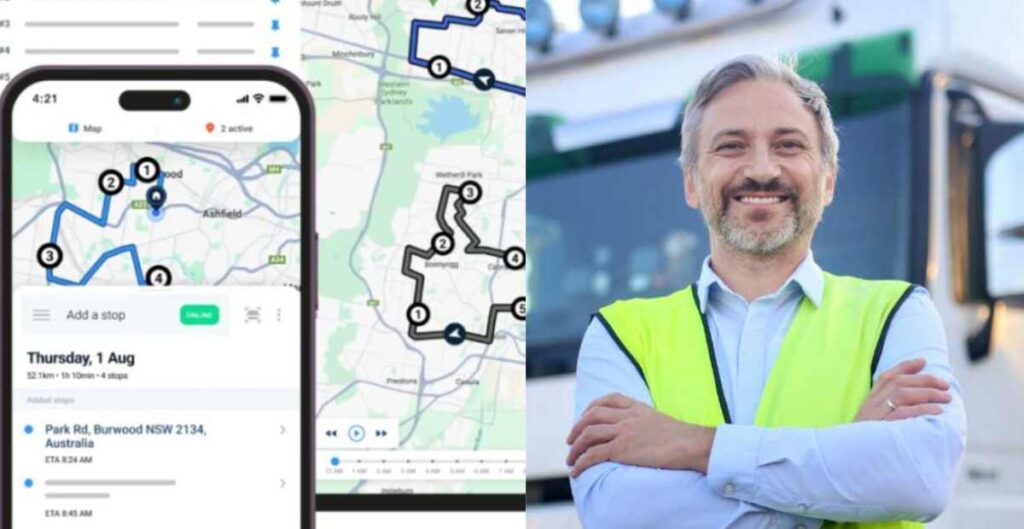You’re in the logistics business, and you know the demands the industry brings. Between last-minute reroutes, tight vessel schedules, and unexpected delays. But it doesn’t have to be like this – a fleet management software platform is your answer.
I know some seasoned logistics professionals are shaking their heads right now, possibly saying, “The old way works best.”
When I started in logistics, we were a three-truck operation, running on phone calls, spreadsheets, and sheer determination. Each cargo movement to a vessel or warehouse was a serious mission.
Fast-forward nine years, and we have scaled up to 12 trucks, seamlessly managing cargo movements with the help of fleet management software.
If you’re still running your fleet with manual processes, it’s time to step up. Here’s how smart fleets are winning the race and how you can, too.
Why you are not winning in the delivery race
So, you’re a logistics company that’s losing customers at a rate of knots, and your business is taking strain due to the following:
- Poor visibility: No real-time tracking meant constant phone calls to check truck locations.
- Last-minute delays: Drivers were often caught off guard by reroutes and changes.
- Inefficient routing: Trucks took longer routes, leading to higher fuel costs.
- Communication breakdowns: Warehouse staff, drivers, and logistics managers were never on the same page.
- Missed compliance checks: Vehicle maintenance and driver hours were hard to track manually.
- Delivery errors: Trucks sometimes arrived at the wrong location or missed time-sensitive cargo handoffs.
Maintaining fleet compliance is crucial to avoid costly penalties and ensure the safety and operational integrity of your fleet.

Why you need fleet management software for your logistics
Picture this: A truck is en route to the port, scheduled to load cargo for a vessel leaving in two hours.
Suddenly, the receiving warehouse clerk calls: “The shipment isn’t ready.” You frantically call the truck driver to hold off.
Meanwhile, another truck is idling at the warehouse, waiting for clearance to offload. Time is slipping away, fuel is burning, and costs are piling up.
Without fleet management solutions, this is your daily grind.
How does real-time tracking work for cargo movement?
The days of constantly calling the driver to find out his location are over. Fleet tracking software, a GPS-based solution, provides real-time updates on the location of your fleet assets, letting you have eyes on all your trucks.
Here’s a scenario: One of your drivers is delivering cargo to a distribution center. Midway, a major accident causes a roadblock.
Without fleet management software, the driver calls in, and you scramble to find an alternative route, hoping he makes it on time.
With software? The system automatically reroutes him, updates the estimated time of arrival, and alerts the receiving warehouse. No panic, no unnecessary downtime.
Logistics bottlenecks do happen. I once had a logistics manager send two trucks to the same location. This manager forgot to update the whiteboard in our boardroom. Safe to say, we missed both shipping deadlines.
How do you fix this with software? I would have noticed two trucks heading to the same location and rerouted one of the trucks to deliver to the correct destination.

How can route planning technology help my logistics?
Fuel costs are one of the biggest expenses in logistics. The longer your trucks stay on the road, the more you’re just throwing away money.
Before fleet management software, we relied on static route plans. If a truck was delayed, there was no way to reroute it in real time.
Vehicle management is crucial for optimizing fleet performance. It includes features such as bookings, key management, and damage reporting, which help enhance overall efficiency through data-driven insights and real-time alerts.
Now, the software optimizes routes based on live traffic data, fuel efficiency, and delivery priorities.
Picture this: Your cargo dispatch manager schedules three deliveries for the day. The system calculates the most efficient route, reducing fuel costs and idle time.
One driver covers all deliveries in record time. Your customers are also smiling because cargo arrives on time.
Now we have discussed fleet management software. Let’s take a look at five ingredients for a successful delivery process that can help you in your race to win in logistics.

Key ingredients for successful a delivery process
A successful delivery isn’t just about getting the parcel to the customer; it’s about doing it in a way that meets their expectations.
Logistics managers play a crucial role in overseeing the complexities involved in the logistics process, including resource management, shipping, and inventory control.
In his book titled Delivery, Steve Orenstein speaks of five key ingredients in the delivery process.
Speed
In today’s fast-paced world, speed is paramount. Customers expect quick deliveries, and companies that can provide this stand out from the competition.
“The best deliveries are speedy deliveries. Same day delivery (or next day, depending on the time the product is ordered) is what wows customers,” says Orenstein.
Choice
Offering customers choices in delivery options (e.g., standard, expedited) allows them to select what best fits their needs.
“The customer needs the flexibility to choose a time window and be confident that it will be delivered on the day and in the window they choose,” says Orenstein.
Communication
Keeping customers informed about their delivery status is vital. Real-time tracking and regular updates ensure customers know when to expect their parcels.
“The delivery drivers should be able to communicate with your customers if needed, and vice versa,” says Orenstein.
Problem solving
Issues can arise during delivery, such as wrong addresses or damaged goods. Having a robust problem-solving mechanism ensures these issues are resolved quickly and efficiently.
“If you can make sure that when there’s a problem, the customer has the option to give feedback directly to you. You can fix it quickly, and they are more likely to feel looked after than frustrated,” he says.
About the author
Sharl is a qualified journalist. He has over 10 years’ experience in the media industry, including positions as an editor of a magazine and Business Editor of a daily newspaper. Sharl also has experience in logistics specifically operations, where he worked with global food aid organisations distributing food into Africa. Sharl enjoys writing business stories and human interest pieces.













